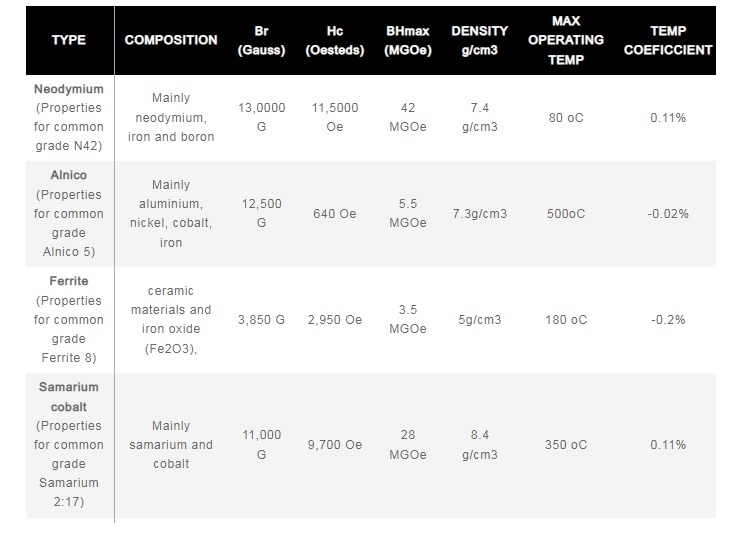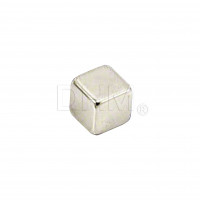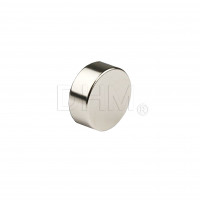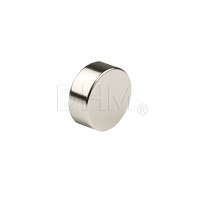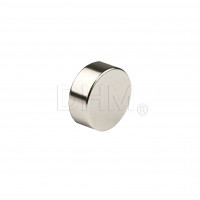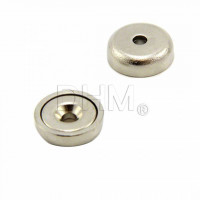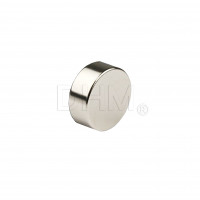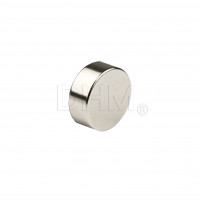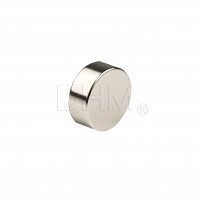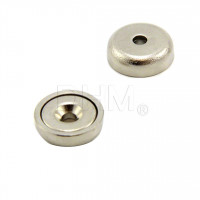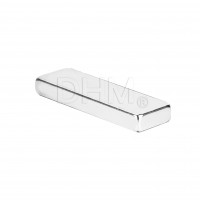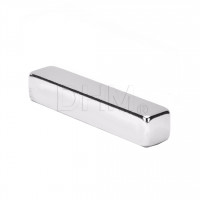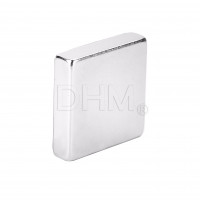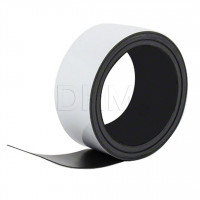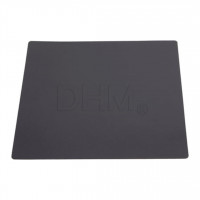Let's discover together the main characteristics of magnetism
Would you like to understand what flux density is? Would you like to know the meaning of coercive force or what differentiates it from intrinsic coercive force? You are in the right place.
We will see here the main definitions related to magnetism.
But what is magnetism?
Magnetism is a science that deals with magnetic phenomena.
Some macroscopic magnetic phenomena were known since ancient times. The ancient Chinese and Greeks discovered that certain natural stones, such as magnetite, were able to attract small pieces of iron.
This is where the name Magnet came from. In fact, the area of Thessaly in ancient Greece where these stones were mined was called Magnesia.
Since ancient times it had been verified that if these stones were left free to move, suspended from a wire or left floating on water, they always oriented themselves in the same direction.
Hence early navigators used magnets to determine the direction of navigation at sea, and thus the compass was born.
From Archimedes to Galileo Galilei, from Kepler to Benjamin Franklin, reaching Coulomb, Faraday and Maxwell to modern times. Over the years many studies have been made of magnetic phenomena, and magnets themselves have evolved. Indeed, new ferromagnetic materials have been discovered over the years, which when combined together can become magnetic through the application of a strong external magnetic field.
The first man-made magnet dates back to the 18th century, but it was not until 1920 that research led to the creation of strong, high-performance alloys, such as Alnico magnets, an alloy of nickel aluminum and cobalt. The discovery of Ferrite, on the other hand, dates back to the 1950s and that of Rare Earth magnets to the 1970s.
Since then, the science of magnetism has progressed exponentially by developing extremely powerful magnetic materials that have made it possible for industry to use them to produce ever smaller and more powerful devices.
MAGNETIC TERMINOLOGY
Magnetism is no different from other high-level technologies in that it has its own language. Knowledge of the terms is essential to understanding the meaning and results of magnetic measurements made.
For many years the CGS (centimeter-gram-second) system of units was used. Recently the SI (International System) or rationalized MKS (meter-kilogram-second) has been proposed as the only method for expressing magnetic quantities.
However, the CGS system is widespread and has characteristics that make it preferable to the SI. Therefore, the CGS system is still widely adopted and is the preferred system in many practical applications.
We see in Table 1 a comparison of the units of each system that may come in handy in measurement.
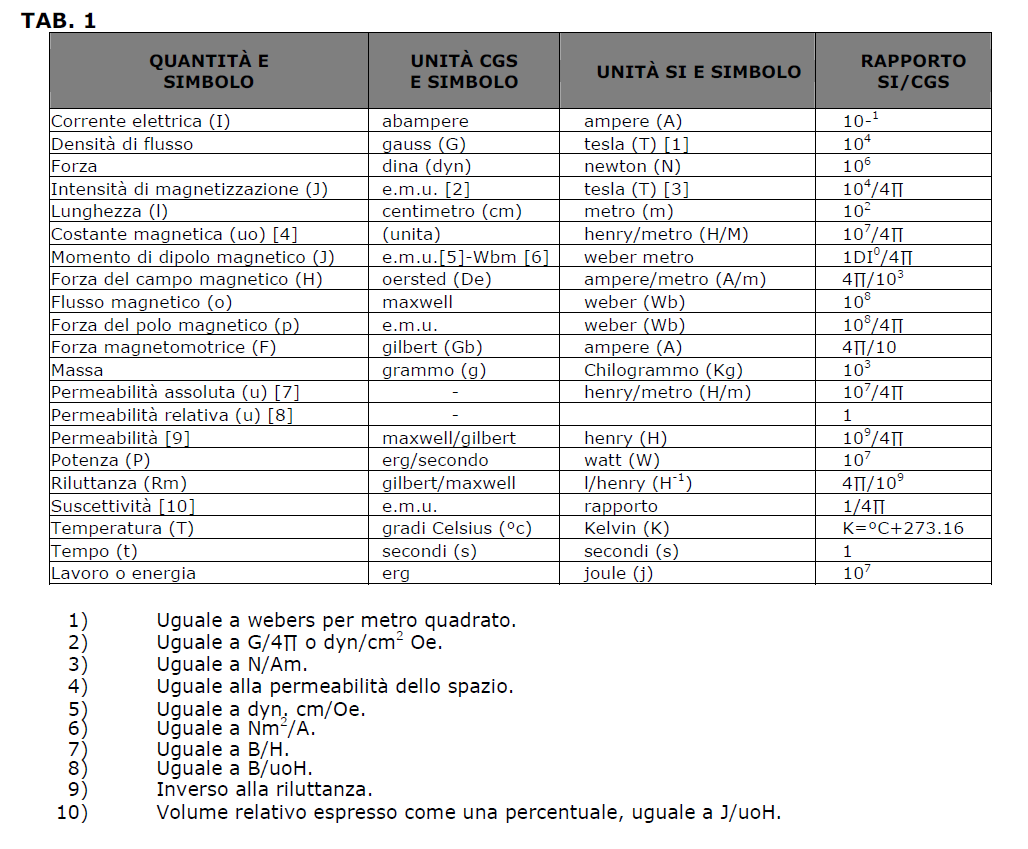
Let us look at some of the most common magnetic terms. A more extensive and detailed list can be found in the ASTM reference guide:
ASTM Designation A340-77, "Standard Definitions of Terms, Symbols and Conversion Factors Relating To Magnetic Testing," 1977.
What do "magnetic field" and "magnetic flux" mean?
In the literature, the terms "magnetic field," "magnetic flux," and "flux density" are often used synonymously. This is incorrect, as these are different but closely related physical quantities. Below we explain how these quantities differ from each other.
Magnetic field/Magnetic field strength (H)
The magnetic field is a field of electromagnetic energy that transmits the forces of a magnet.
In drawings, the magnetic field is often symbolized by field lines. It is also possible to make it visible in practice, for example by using iron filings on a sheet under which there is a magnet.
According to the definition, magnetic field lines always run from the north pole to the south pole of a magnet and from there through the magnet back to the north pole to form a closed circuit.
The magnetic field is represented by the letter H and measured in amperes per meter.
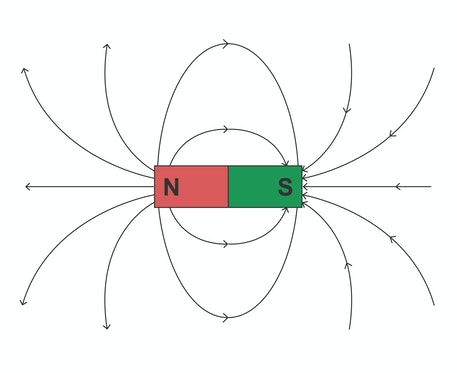
Image source: supermagnet
Magnetic flux density (B)
Magnetic flux density B describes the density and direction of field lines passing through a surface A in space. The denser the field lines, the greater the magnetic flux density. It is measured in Tesla (T).
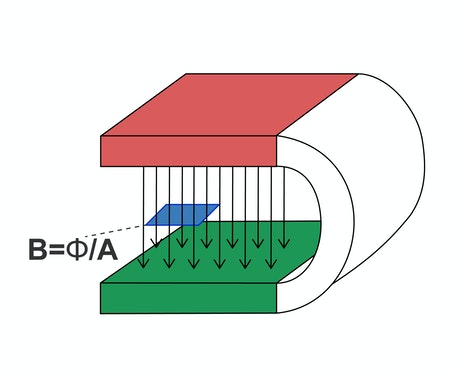
Image source: Supermagnet
Magnetic field / Magnetic flux (Φ)
Magnetic flux Φ is the density of magnetic flux passing through an imaginary surface.
If the field lines are straight lines (such as between the poles of a horseshoe magnet), the magnetic flux Φ through some surface A, perpendicular to the flux, can be calculated as follows:
Φ = BxA
The unit of measurement is Tm².
What is the force of attraction?
Calculating the force of attraction or repulsion between two magnets is, in general, an extremely complex operation. In fact, it depends on the shape, degree of magnetization, orientation and distance of the two magnets.
The force of attraction is defined as the force required to be applied perpendicularly to the magnet in order to pull it away from a soft iron surface when it is in contact. If the force is applied in the direction parallel to the contact surface, the value given is greatly reduced and is also affected by the frictional force exerted between the surface of the magnet and that of the metal plate.
What is the difference between magnet-iron and magnet-magnet combination?
Magnets and iron attract each other but do not repel each other.
In the case of direct contact, the attraction between magnet and iron is equal to the attraction between two equal magnets. As the distance increases, however, the attraction between magnet and iron decreases much faster than the attraction between two magnets. This is due to the lower remanence of iron.
What is the coercive force (Hc)?
The coercive force Hc refers to the field strength required to completely demagnetize a magnet. The higher this value, the more a magnet will be able to maintain its magnetization if it is exposed to a magnetic field of opposite sign.
A distinction is made between coercive force bHc with reference to magnetic flux density and coercive force jHc with reference to polarization. If a magnet is exposed to a demagnetizing field strength equal to bHc, its magnetic flux density disappears. The magnet itself has not lost its magnetization, but the magnetic flux density produced by it is equal and opposite to the magnetic flux density produced by the demagnetizing field, so that they neutralize each other. Only with a demagnetizing field strength equal to jHc will the magnet lose its magnetic polarization and thus lose its magnetization completely.
As a unit of measurement for magnetic field strength, A/m (Ampere over meter) is used. Sometimes, however, it is still referred to as Oe (Oersted), the old CGS unit of measurement.
What is the difference between "ferromagnetic" and "magnetic"?
These two terms are often used incorrectly as synonyms. An object is considered ferromagnetic if a magnet sticks to it. For example, if a magnet adheres to a steel shelf, the shelf is said to be ferromagnetic. Colloquially, however, it is referred to as a magnetic surface.
It is only correct to say that an object is magnetic if it behaves like a magnet.
What ferromagnetic materials exist? What attracts a magnet?
Magnets attract only certain materials. The three best-known ferromagnetic materials are:
- iron (Fe)
- cobalt (Co)
- nickel (Ni)
Some rare earth metals are also ferromagnetic, but only at very low temperatures. At room temperature they are only paramagnetic. This means that magnets attract them only slightly. These are the following metals:
- dysprosium (Dy)
- the erbium (Er)
- the gadolinium (Gd)
- the holmium (Ho)
- terbium (Tb)
What does maximum energy product mean?
The maximum energy product measures the maximum magnetic energy that can be stored in a magnet. It is the maximum product that can be obtained for a given material by multiplying the magnetic flux density B by the magnetic field strength H. Either kJ/m³ (Kilojoules per cubic meter) or MGOe (Mega-Gauss-Oersted) is used as the unit of measurement.
In a nutshell, the maximum energy product is an indicator of the strength of a magnet. Therefore, the same result can be obtained by using a small magnet with a high energy product, or a large magnet with a low energy product.
What does remanence (Br) mean?
The Br remanence measures the magnetic induction or magnetic flux density that remains in a magnet after it has been magnetized. This means that the higher this value, the more powerful the magnet.
The Tesla (T) is used as the unit of measurement for magnetic induction or magnetic flux density.
In the CGS system Gauss (G) was used, and the relationship is: 1 Tesla = 10 000 Gauss.
What is the difference between an anisotropic and isotropic magnet?
Anisotropic magnets are obtained if certain steps in the production process (such as pressing, injection or extrusion operations) are carried out in the presence of a magnetic field, So the domains are oriented in the same preferential direction.
On the other hand, if production is carried out without a magnetic field, the domains do not have a preferential orientation and thus Isotropic magnets are obtained.
With the subsequent magnetization operation, Anisotropic magnets show superior magnetic characteristics compared to Isotropic magnets.
Can a magnet be cut or drilled?
There are flexible magnets with a plastic component that can be easily cut or drilled. These are generally available commercially in sheets or profiles.
Sintered magnets, on the other hand, such as Rare Earths and Ferrites, require special techniques and equipment so it is an operation that can only be handled by specialized personnel with appropriate skills.
Types of magnets
Neodymium (Nd) magnets.
They offer the highest magnetic force among currently available materials. They allow high forces to be obtained from a small volume. One disadvantage is their tendency to oxidize easily. Called "rare earth magnets" along with cobalt magnets.

Image source: first4magnets
Alnico Magnets (Al-Ni-Co)
Superior properties of temperature resistance and mechanical strength. Disadvantage: prone to demagnetization easily.
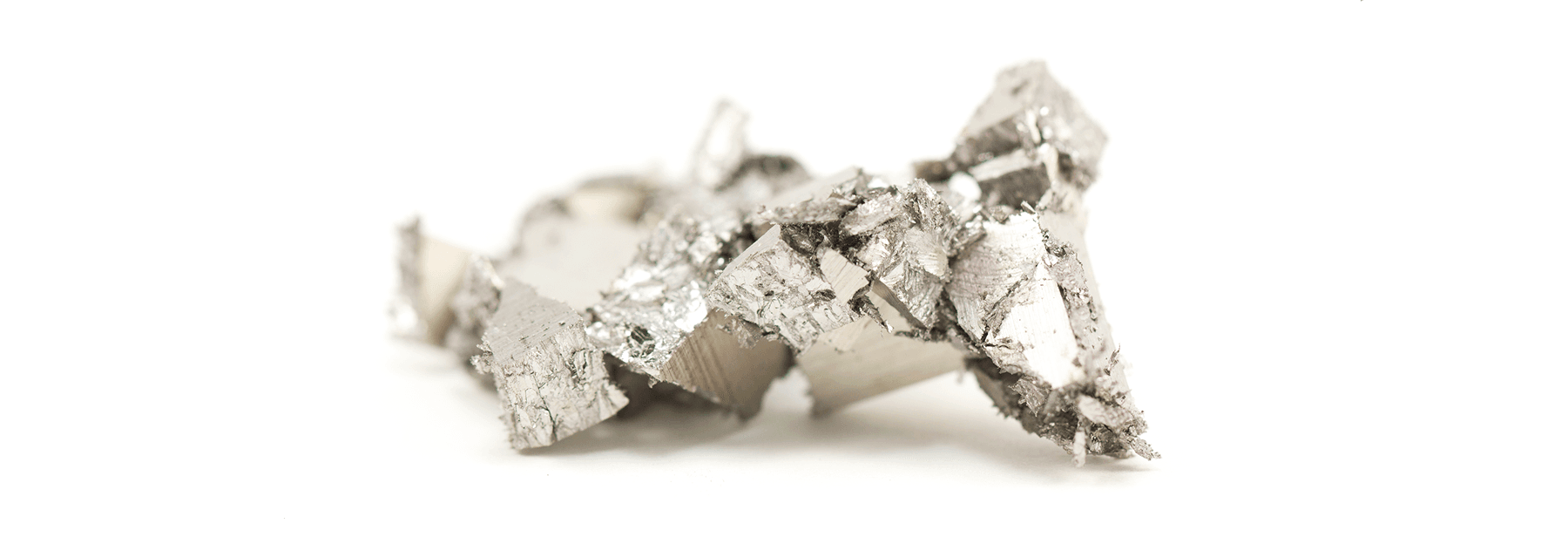
Image source: first4magnets
Ferrite (Fe) magnets
This material has a low magnetic force but a relatively high coercive force, so it suffers little from demagnetization phenomena. Mechanical strength is low and the material is brittle, so it requires caution in handling.

Image source: first4magnets
Samarium-Cobalt Magnets (Sm-Co)
The full name is samarium-cobalt magnets and they represent the second group, in strength, after neodymium-iron-boron magnets. Advantages are resistance to oxidation and high temperatures. However, they are brittle and have low mechanical strength, so they require caution in handling.
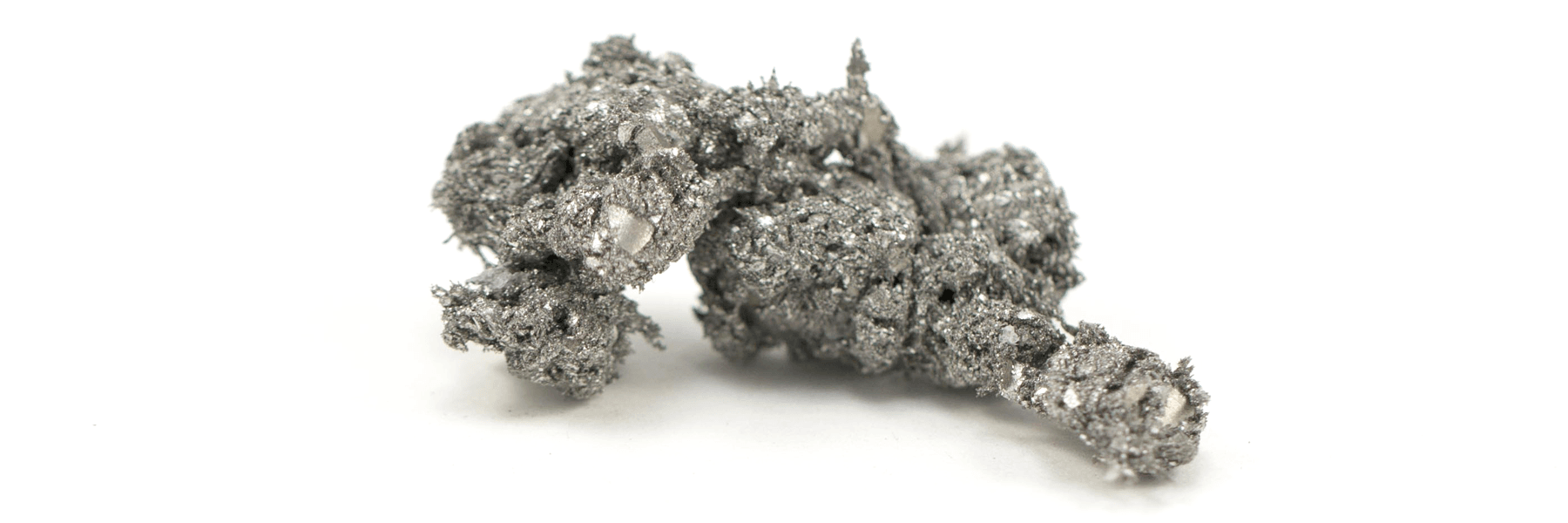
Image source: first4magnets
The following details provide a simple overview of the four main magnetic materials:
Image source: first4magnets
Br = RemainderHc= Coercive forceBHmax= Maximum energyproductTemperaturecoefficient= Percentage of magnetism lost per one-degree Celsius temperature rise, but regained upon cooling.
Magnetic rubber
In addition to the materials listed above, magnetic rubber materials are also produced. Flexible magnets contain magnetic particles imprisoned within a flexible polymer binder. Flexible magnets are used for unique applications that would not be possible with other "hard" magnets.
Typically, flexible magnets have a maximum energy product between 0.6MGOe and 1.6MGOe.
So their magnetic power per cm2 is small, but if they are used over a large contact area, they can generate a considerable force.
There are two different categories of flexible magnets: magnetic sheets and extruded magnetic profiles.
Magnetic rubber can be cut with scissors and can come with an adhesive backing, a brightly colored vinyl coating, and can be easily cut into special shapes using cutters.
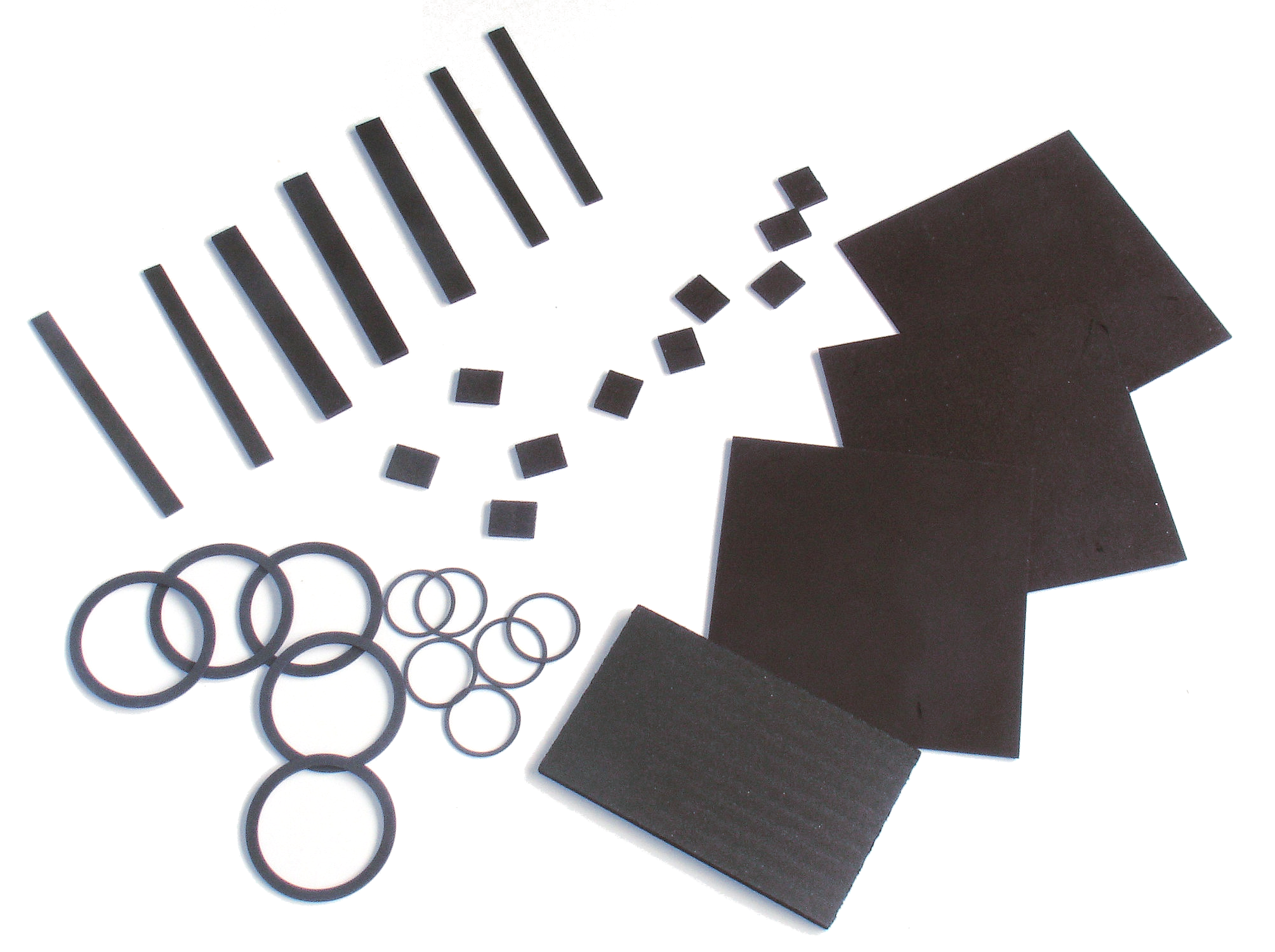
Warnings
- Because these materials are very brittle, modification work, such as cutting or drilling, is not possible.
- Magnets are very sensitive to impact. Use caution during installation.
- Magnetic fields can cause adverse effects on: Electronic devices such as cell phones, PCs and watches - Medical electronic devices such as pacemakers.
- The magnetic force can weaken if the component is used at temperatures above the maximum operating temperature.
- Strong impact or modification to the magnet can impair its strength.
- To avoid direct impact on the magnet, keep a distance of 0.1~0.3mm from the body
Do you need more information?
Do you have more questions about magnets and related definitions?
Contact us and we will provide you with the necessary guidance.






